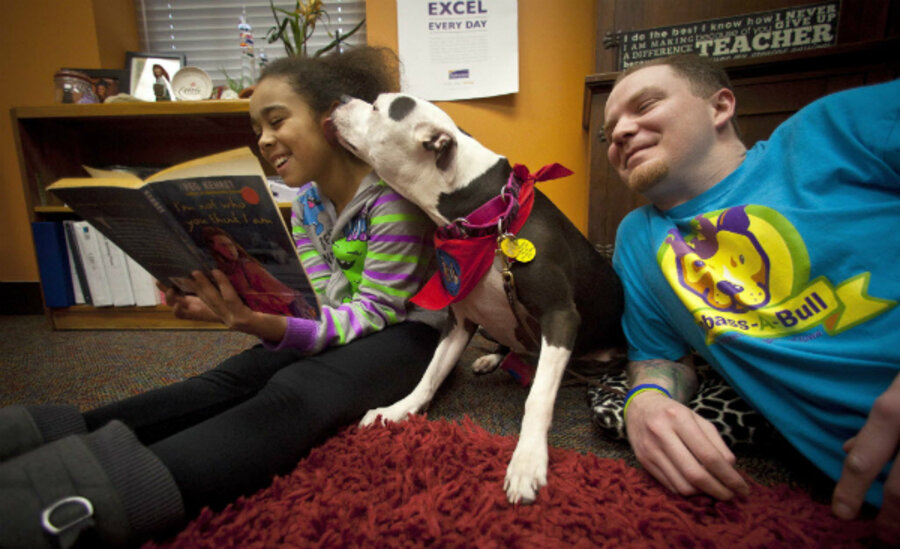The dog is my homework: Attentive pups listen, help students read
| Florence, Ala.
Each Wednesday morning Maggie gets a little impatient.
As her car turns from Tombigbee Street to Pine Street, she starts to whine and whimper just a bit.
She's ready to be at school. The 8-year-old is most looking forward to reading.
Well, actually she's excited about listening.
Maggie is a German shepherd first-grader at Kilby School. Once a week she comes to Mandy Wick's class to listen to students read.
Maggie is one of six therapy dogs the school uses to increase reading fluency and confidence.
"The dogs are non-judgemental listeners," Kilby counselor Lauri McCoy said.
McCoy started the program at Kilby this year, her first at the school, after seeing a successful model in her previous school in North Carolina.
"The dogs aren't going to critique how you say a word," she said. "No dog has a timer on you when you are reading. The dogs aren't worried about how long it takes a students to read."
Teachers in each grade, first through sixth, select students they believe will benefit most from the program for weekly sessions. Additional students read with the therapy dogs as time allows.
Third-grade teacher Kim Morris said she has seen dramatic changes in some students who were reluctant to read in class.
She credits her class's dog, Chip, a Bichon Frise.
"I have one student who was reading very little," Morris said. "But now I can't keep him in books. He's even reading chapter books now."
That's thanks to Chip, she said.
Students select a book to read the night before the dog visits. This encourages the students to ready outside of the classroom and in addition to any assigned reading, educators said. The next day, the student reads the same book to their puppy pal.
"It works for reading because the students feel they are reading to someone that really cares," Wicks said. "Maggie has a calming effect on the students."
Kilby's program is part of READ, or Reading Education Assistance Dogs. READ began in 1999 in Utah and is a project of Intermountain Therapy Animals. The dogs used are all certified therapy dogs.
A 2010 study by the University of California-Davis showed public school third-graders in the program saw a 12 percent increase in reading fluency. Home-schooled students in the same study saw a 30 percent increase in fluency after the 10-week program.
A 2011 study released by the School of Veterinary Medicine at Tufts University shows that students who read weekly to dogs during the summer months showed a slight gain in reading ability and attitude toward reading.
During the study, a separate group of elementary students read to volunteers from the school. Those students showed a decline in both measures. Also in that study, the students selected to read with the dogs all completed the program, while a third of the students paired with human volunteers dropped out.
No Kilby students want to drop out. It's been so popular, in fact, students use it as an incentive for positive behavior in the classroom.
"I use getting to read with Maggie as motivation for good behavior," Wicks said. "Everyone wants to spend time with her so she is an incentive for them to make good decisions."
A lot of thought goes into picking books to read to the dogs. Merrie Margaret Brewton, a 7-year-old first grader, said Maggie enjoys hearing stories about other dogs. In particular, Brewton said, Maggie liked a book she picked called "Biscuits Big Friend."
"She wanted to see the pictures," Brewton said. Brewton said she has two dogs at home but they aren't as well suited for reading as Maggie.
"They're probably better for watching TV," she said.
Morgan Bennett, 7, said Maggie really does like dog books. He recently read a book to Maggie about a dog that was trying to escape from a fence.
"I like that I get to pet her while I'm reading," he said. "She will sit or lay in the floor and listen."
Next year Kilby will begin tracking reading data to judge the success of the program, but McCoy is already very confident of the good the dogs are doing.
"The energy and enthusiasm to read has increased for our students," she said. "It's been a success since the beginning. We saw improvements after the first or second sessions."






